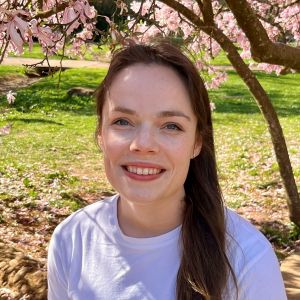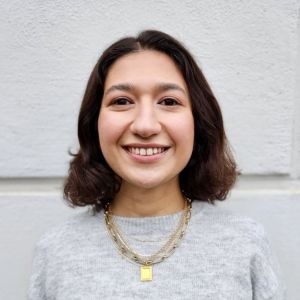Bionote

Maria Lackmann did her Bachelor in Agricultural sciences in Göttingen. Afterwards, she worked for the Chamber of Agriculture of Lower-Saxony (Germany). Following that she did her Masters in Plant Sciences in Wageningen (Netherlands), where she developed a Speed Breeding method for Quinoa within her thesis. After that, she explored vitamin metabolism in legumes as research assistant at University of Geneva (Switzerland). She then started the PhD in the SmartBeans project in Bonn (Germany). She is interested in improvement of protein-rich crops to alleviate malnutrition and increase sustainability.

Meltem Cantürk completed her Bachelor’s degree in Geomatics Engineering in Istanbul Technical University. She then pursued her Masters in Geodetic Engineering at the University of Bonn where she did her master’s thesis on UAV-based vineyard inventory, focusing on 3D perception for precision viticulture. Currently, she is a PhD candidate at the Institute of Geodesy and Geoinformation at the University of Bonn. Her research interests lie in 3D plant phenotyping, particularly in estimating morphological traits.
Presentation Abstract
Common bean (Phaseolus vulgaris L.) is a major food legume globally but not grown on a large scale in Europe. Breeders aim to improve common beans for these production systems. Early vigour enhances, among other things, the ability of young plants to outcompete weeds in large-scale production systems. Manual phenotyping of early vigour traits is time-consuming and costly, making it impractical for large-scale, multitemporal measurements. Thus, high-throughput phenotyping over time and improved automated pipelines for parameter extraction are needed.
We cultivated 224 accessions of common beans mostly from the INCREASE project collection as single plants across two years and two locations. UAV-based RGB images from five angles across multiple dates were captured, and 3D point clouds were constructed using the SfM technique. For plant parameter extraction we developed an automated pipeline using the ExGR index for plant-soil separation, followed by a DBSCAN algorithm to segment individual plants from the point cloud. Parameters like height, volume, and surface/projected area were automatically calculated per single plant. The mean of the four biological replicates per field and date were calculated and showed that already 21 days after sowing distinct differences in the extracted parameters between genotypes can be detected.
Co-Authors: Anne Reinders2, Henrik Schumann2, Lasse Klingbeil1, Annaliese S. Mason2, Heiner Kuhlmann1
1 Department of Geodesy, Institute for Geodesy and Geoinformation, University of Bonn, Nußallee 17A, 53115 Bonn, Germany
2 Plant Breeding Department, Institute of Crop Science and Resource Conservation, University of Bonn, Kirschallee 1, 53115 Bonn, Germany